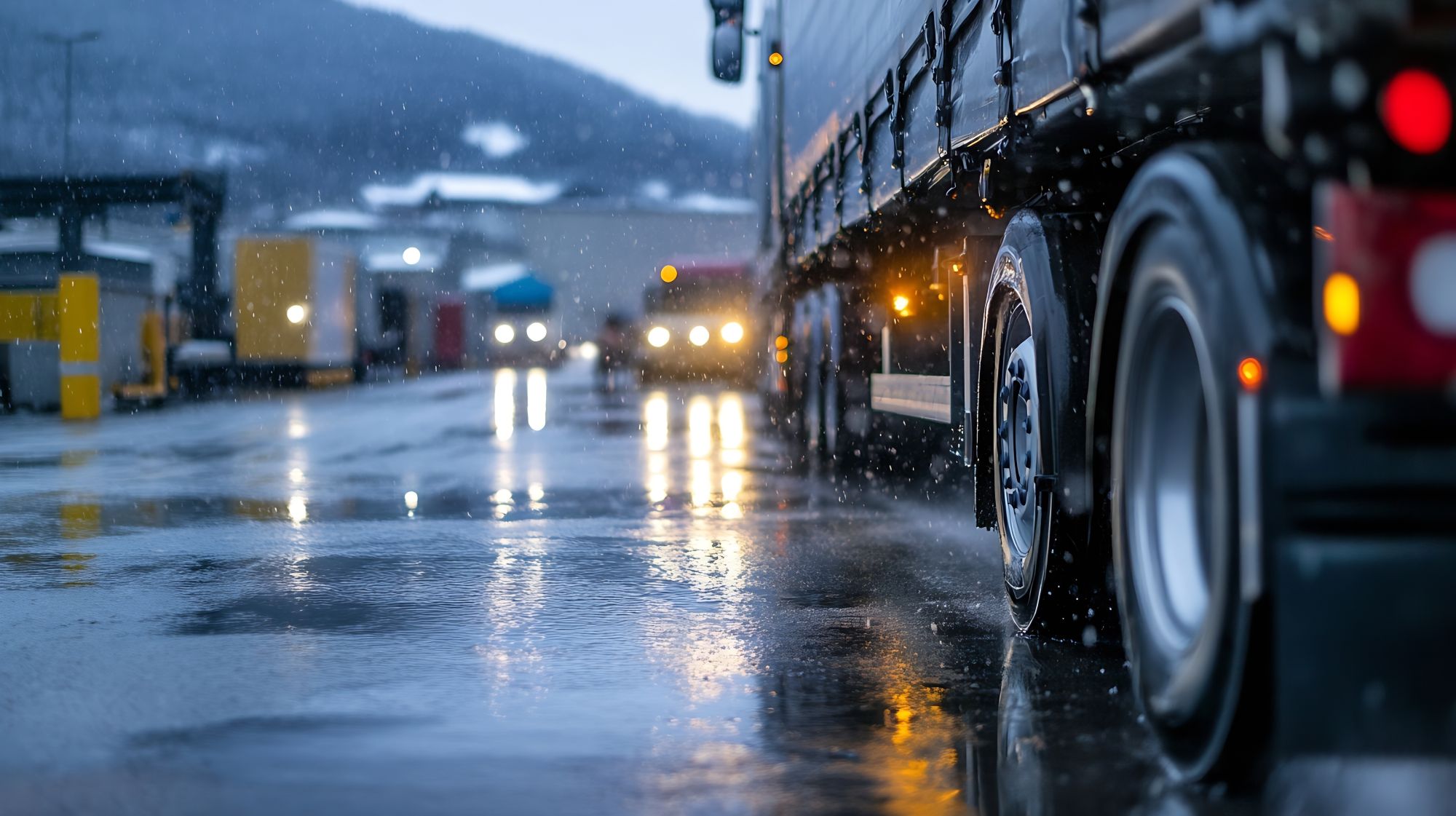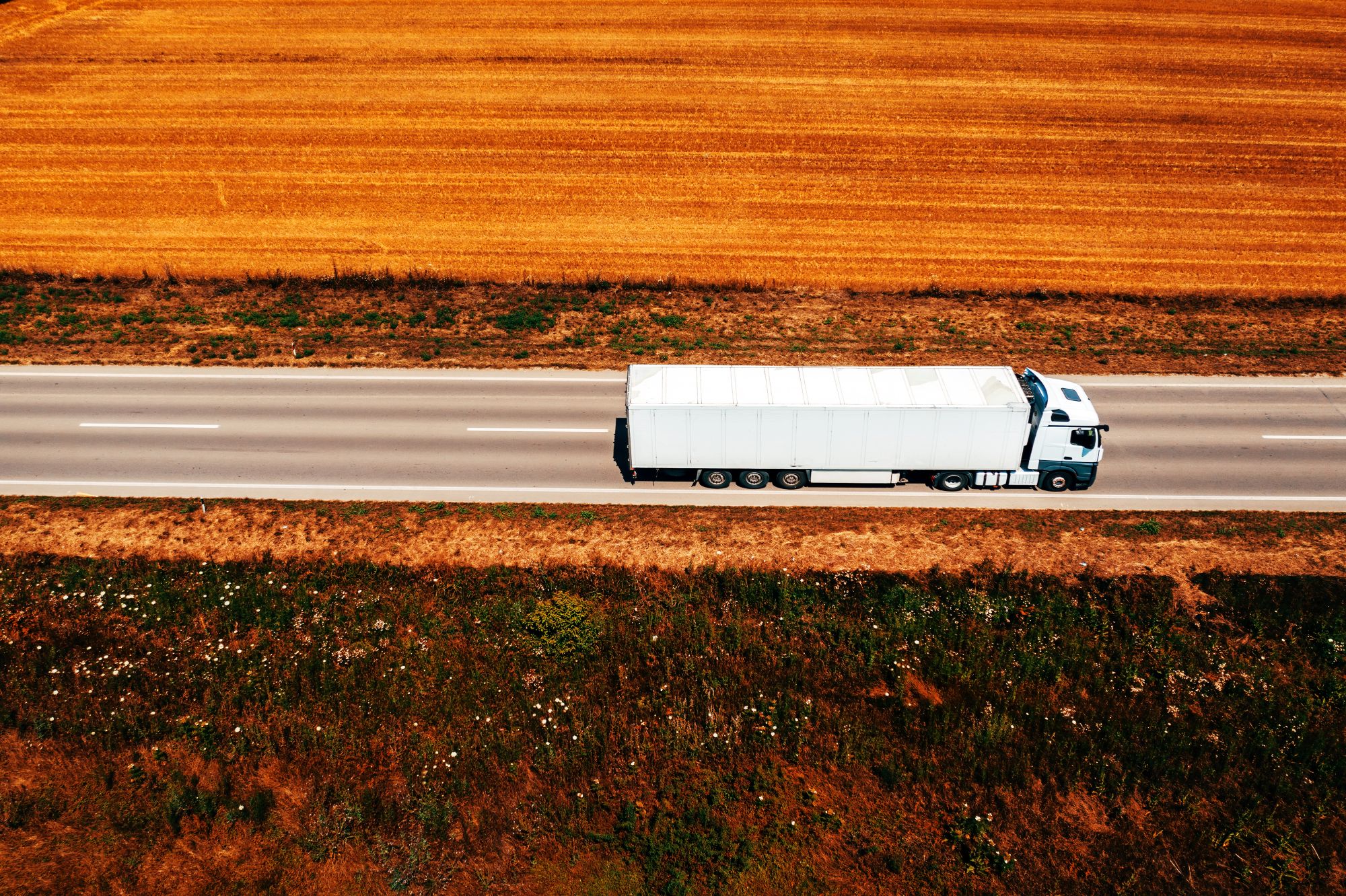
Guest
Ako zmena klímy ovplyvňuje sektor mobility
Vytvorené: 21. 07. 2025
•
Aktualizované: 21. 07. 2025
Zmena klímy už nie je vzdialeným rizikom. Pre tých, ktorí pracujú v cestnej doprave, je to každodenná prevádzková realita, ktorú je každým rokom ťažšie ignorovať. Od horúčav, ktoré roztápajú asfalt, až po záplavy, ktoré odrezávajú hlavné trasy, vplyv meniacej sa klímy je súčasťou prepravy tovaru.
Pre manažérov vozového parku to znamená, že sa musia riadiť vyvíjajúcimi sa predpismi, aktualizovať infraštruktúru a prehodnotiť plánovanie kontinuity. Pre vodičov to znamená prispôsobiť sa novým rizikám na cestách - od prasknutia pneumatík až po narušenie dodávok. A pre celé odvetvie to znamená potrebu odolnejšieho prístupu k mobilite s ohľadom na klímu.
Narušenie počasia je operačnou hrozbou
V júli 2022 Spojené kráľovstvo zažilo najteplejší deň v histórii. Keď sa teploty vyšplhali na 40 ℃, cesty začali mäknúť a úseky diaľnice A14 boli uzavreté z dôvodu degradácie povrchu. Prevádzkovatelia vozového parku boli nútení presmerovať dodávky, niekedy aj v krátkom čase, zatiaľ čo teplota motorov prudko stúpala a vozidlá mali problémy s udržaním výkonu.
V tom istom roku spôsobil silný vietor búrka Eunice rozsiahle škody na nákladných koridoroch v západnej Európe, pričom prevrátil vozidlá s vysokými bočnicami a poškodil náklad citlivý na teplotu. Medzitým v januári 2024 búrka Henk zaplavila rozsiahle oblasti stredného Anglicka. Kľúčové cesty v Midlands boli neprejazdné a niektorí vodiči uviazli na dlhé hodiny.
Nejde o ojedinelé udalosti. Sú to príznaky dopravného systému, ktorý je čoraz zraniteľnejší voči klimatickým hrozbám. Povrchy ciest, komponenty vozidiel a logistické siete sú vystavené skúške meniacich sa podmienok a dôsledky pociťuje celý dodávateľský reťazec.
Narušené dodávateľské reťazce
Pokiaľ ide o narušenie súvisiace s klímou, dopady sa neprejavujú len na jednotlivých trasách. Ovplyvnené sú celé dodávateľské reťazce - niekedy bez varovania. V Holandsku zvyšujúca sa hladina mora a silnejšie dažde nútia úrady a podniky prehodnotiť odolnosť kritickej logistickej infraštruktúry, najmä v nízko položených priemyselných oblastiach.
Prístav Rotterdam - najväčší európsky námorný prístav - podnikol aktívne kroky na prispôsobenie sa klimatickým rizikám, pričom posilnil nábrežné múry, zvýšil prístupové cesty a zmodernizoval systémy dažďovej vody na ochranu pred povodňami. Vnútrozemské logistické centrá sú tiež pod drobnohľadom, keďže extrémne počasie odhalilo zraniteľnosť prístupových ciest a odvodnenia.
Inovácie v doprave
Technológie vozového parku sa rýchlo zlepšujú, najmä pokiaľ ide o elektrifikáciu a inteligentnú diagnostiku. Klimatické zmeny však vytvárajú novú záťaž aj pre tie najpokročilejšie vozidlá. Účinnosť batérií môže v chladnom počasí klesnúť až o 20 %, čím sa znižuje efektívny dojazd elektrických dodávok. Medzitým vysoké teploty urýchľujú degradáciu pneumatík a predstavujú ďalšiu záťaž pre chladiace systémy vozidiel.
Na riešenie týchto problémov niektorí prevádzkovatelia investujú do systémov prediktívnej údržby, ktoré využívajú telematiku na predvídanie opotrebenia a plánovanie opráv pred vznikom nákladných porúch. Iní modernizujú komfortné systémy v kabíne, aby chránili pohodu vodiča počas extrémnych horúčav alebo chladu. Hoci tieto zmeny vyžadujú počiatočné investície, môžu priniesť dividendy v podobe prevádzkového času, bezpečnosti a udržania vodičov.
Zvyšujúce sa klimatické riziko mení aj poistenie. Niektorí poisťovatelia reagujú na zvýšenú frekvenciu poistných udalostí spôsobených extrémnym počasím zvýšením poistného a sprísnením výluk. Najmä poistenia prerušenia prevádzky sú pod väčšou kontrolou, najmä v prípadoch, keď sú dodávateľské reťazce náchylné na opakované narušenie. A hoci poistenie nákladu zostáva v popredí záujmu, nie všetky poistné zmluvy automaticky pokrývajú meškania spôsobené klimatickými udalosťami, ako sú záplavy alebo silný vietor.
Manažéri vozového parku by mali prehodnotiť svoje poistenie vzhľadom na tieto nové riziká. To znamená, že treba skontrolovať výnimky, posúdiť, ako sú definované udalosti súvisiace s klímou, a zabezpečiť, aby boli primerane riešené kritické medzery, ako napríklad prestoje v dôsledku uzávierky ciest. V niektorých prípadoch môže preukázanie aktívneho prístupu k riadeniu rizík, zmierňovaniu následkov povodní a školeniu vodičov pomôcť zabezpečiť výhodnejšie podmienky.

Regulačné prostredie
Zatiaľ čo fyzikálne vplyvy zmeny klímy sú už viditeľné, regulačné zmeny pridávajú ďalšiu vrstvu zložitosti pre prevádzkovateľov. V Spojenom kráľovstve a Európe sa rýchlo rozširujú nízkoemisné zóny, čo kladie nové požiadavky na zloženie vozového parku a dodržiavanie predpisov. V Londýne sa naďalej rozširuje zóna veľmi nízkych emisií (ULEZ), zatiaľ čo mestá ako Birmingham a Oxford zaviedli svoje vlastné varianty.
Na európskej úrovni sa v balíku Green Deal a Fit for 55 stanovili ambiciózne ciele v oblasti dekarbonizácie. Prevádzkovatelia vozových parkov sú motivovaní - a čoraz viac sa od nich vyžaduje - aby prešli na čistejšie palivá a technológie. Prevádzkovatelia teraz čelia novým základným požiadavkám na to, čo sa považuje za prijateľnú obchodnú prax, od povinností elektrifikácie až po pravidlá transparentnosti dodávateľského reťazca.
Pre tých, ktorí spravujú vozové parky, predstavujú tieto zmeny logistickú výzvu a zároveň strategickú príležitosť. Udržateľnosť neznamená len vyhnúť sa pokutám - ide o zabezpečenie prevádzky do budúcnosti a predstihnutie meniacich sa očakávaní zákazníkov.
Budovanie odolných operácií
Adaptácia sa neuskutoční zo dňa na deň, ale postupné zmeny môžu mať významný vplyv. Niektorí prevádzkovatelia v súčasnosti vykonávajú posúdenie klimatických rizík v rámci svojej flotily a identifikujú aktíva a trasy, ktoré sú najviac ohrozené narušením. Iní ponúkajú vodičom aktualizované školenia na zlepšenie bezpečnosti a rozhodovania počas extrémnych poveternostných udalostí.
Mení sa aj výber palív. Dopravcovia, ktorí hľadajú nízkouhlíkové alternatívy, sa obracajú na HVO - hydrogenovaný rastlinný olej - alternatívu nafty, ktorá znižuje emisie bez potreby novej infraštruktúry. Tí, ktorí investujú do softvéru na optimalizáciu zaťaženia, vidia výhody nielen v úsporách paliva, ale aj v znížení emisií, ktoré podporujú ciele dodržiavania predpisov.
Už niet pochýb o tom, že zmena klímy ovplyvní budúcnosť cestnej dopravy, a to nie po desaťročiach, ale práve teraz. Výzvou pre prevádzkovateľov je prejsť od reakčného myslenia k strategickejšiemu, dlhodobému mysleniu. To znamená pochopiť riziká, včas na ne reagovať a uvedomiť si, že odolnosť sa rýchlo stáva zdrojom konkurenčnej výhody.
"To isté počúvame od prevádzkovateľov vozových parkov v Spojenom kráľovstve a Európe," hovorí Nick Renton, vedúci európskej stratégie a rozvoja podnikania v spoločnosti SNAP. "Narušenie klímy nie je budúcim rizikom - už je tu a ovplyvňuje všetko od skladovania a plánovania trás až po pohodu vodičov. Flotily, ktorým sa bude dariť, budú tie, ktoré budú považovať odolnosť voči klimatickým zmenám za obchodnú stratégiu, nielen za núdzovú reakciu.
"Je to dôležité, pretože náklady na nečinnosť rastú - nielen finančne, ale aj z hľadiska zmeškaných dodávok, prevádzkových prestojov a pohody vodičov na cestách. Ak chceme udržať pohyb tovaru a rast podnikov, musíme začať budovať odolnosť už teraz."
V spoločnosti SNAP úzko spolupracujeme s vozovými parkami v Spojenom kráľovstve a Európe, aby sme im pomohli zorientovať sa v tejto novej realite. Či už ide o poznatky, partnerstvá alebo inteligentnejšie nástroje pre prevádzku na cestách, sme tu, aby sme podporili tých, ktorí udržiavajú kolesá v chode - bez ohľadu na počasie. Zaregistrujte sa ešte dnes a využite výhody našich riešení pre správu vozového parku.



